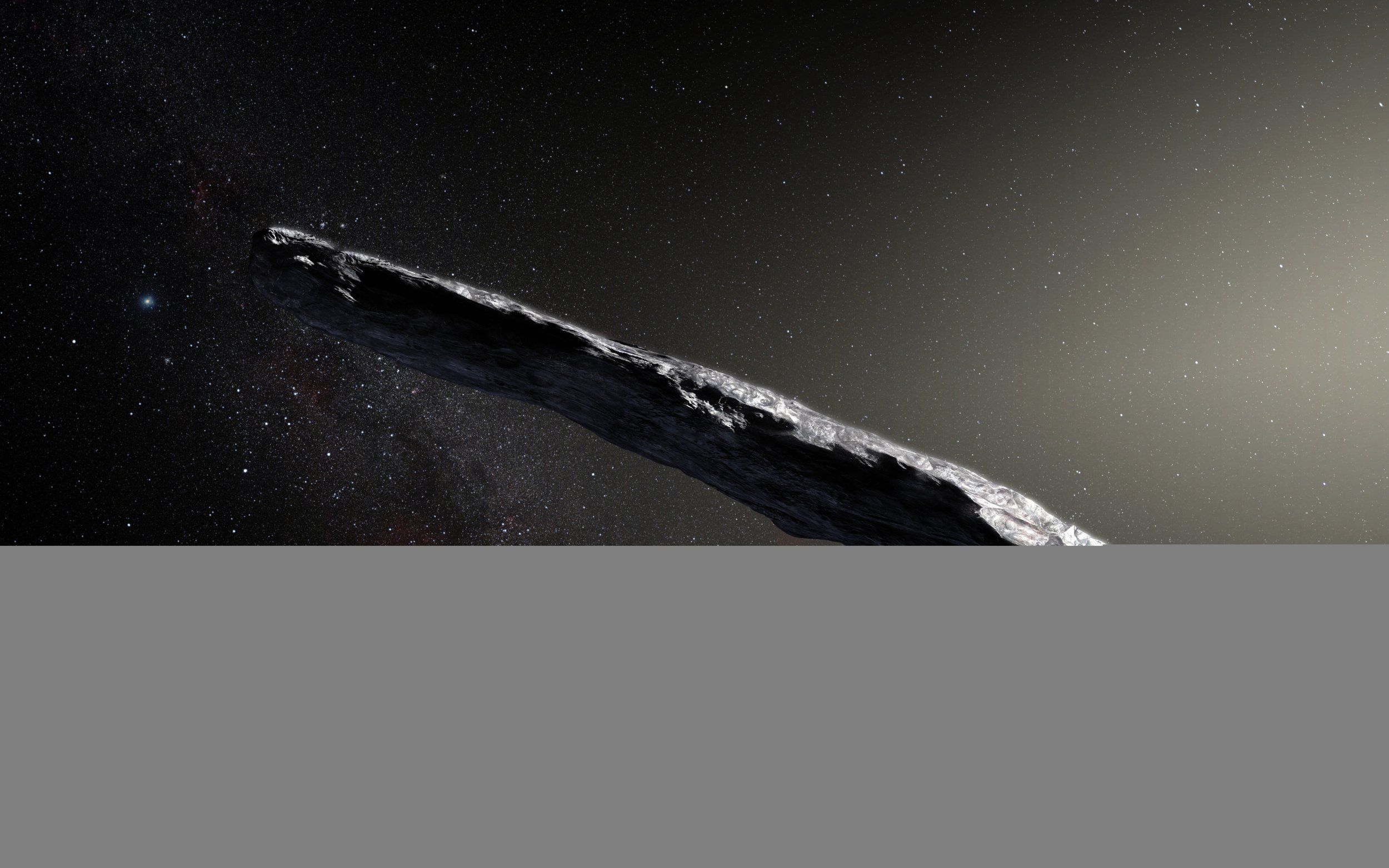
The first-ever visitor to Earth's neighborhood from beyond our solar system, it turns out, looks like a giant reddish stick thrown for some cosmic dog at the park. And just a month after the weird object was spotted, astronomers have now published a paper on the discovery in the journal Nature Letters.
"This thing is very strange," lead author Karen Meech, an astronomer at the University of Hawaii, which runs the telescope that spotted A/2017 U1, said in a press release. That's particularly true of its shape, which is much more highly elongated than any of the asteroids scientists have spotted to date. The asteroid, known as 'Oumuamua, caught their eye all along for its weird path.
But the scientists were also struck by the weird pattern of brightening and fading light they saw reflected off the asteroid every three and a half hours or so, a much more dramatic pattern than they've seen from other objects. They figured out that the most logical explanation was that the asteroid is about 10 times longer (with 10 times more reflective area) than it is wide.
"What we found was a rapidly rotating object, at least the size of a football field, that changed in brightness quite dramatically," Meech said. "This change in brightness hints that 'Oumuamua could be more than 10 times longer than it is wide—something which has never been seen in our own solar system."
The new paper is based on observations taken by telescopes in Hawaii and Chile, with astronomers from institutions around the world chipping in. Very early in the observations, it became clear to scientists that the object was following a path unlike those ever spotted before—and that it in fact appeared to have come from beyond our solar system, the first such object we've ever spotted.
Read more: First visitor from outside our solar system has a name and an origin
In its ingredients, however, 'Oumuamua looks more or less the same as any run-of-the-mill asteroid scientists have spotted to date.
But there's one more piece of discovery in the new paper: It's moving a lot faster than asteroids from within our solar system. That means that if, by a stroke of very bad luck, it were to hit Earth, the collision would be more violent than previous impacts, like the one that wiped out the dinosaurs.
They also calculate that at any given time, there's an object about 800 feet across born beyond our solar system hanging out within Earth's orbital range. That means there should be a whole lot more observations of similar objects to come.
"The discovery of A/2017 U1 suggests that previous estimates of the density of interstellar objects were pessimistically low," the team writes in the paper. And there's new cutting-edge asteroid-observing technology in the pipeline to help them make the most of the coming opportunities.
Uncommon Knowledge
Newsweek is committed to challenging conventional wisdom and finding connections in the search for common ground.
Newsweek is committed to challenging conventional wisdom and finding connections in the search for common ground.
About the writer
Meghan Bartels is a science journalist based in New York City who covers the science happening on the surface of ... Read more
To read how Newsweek uses AI as a newsroom tool, Click here.








